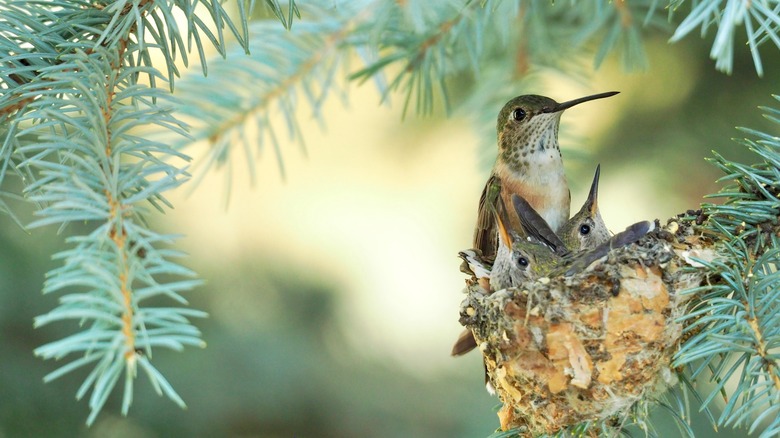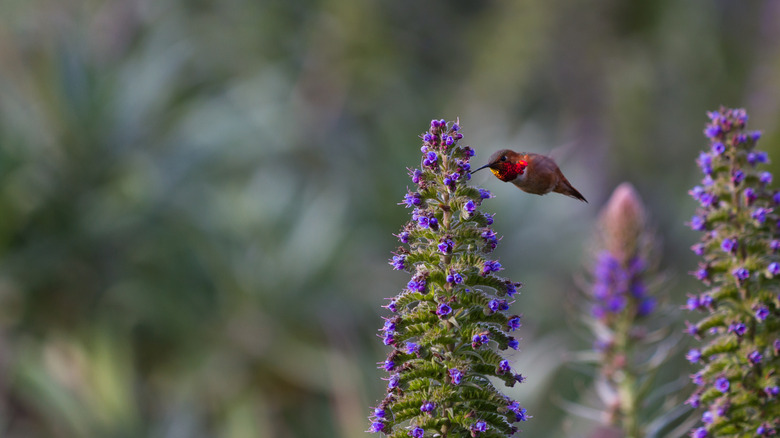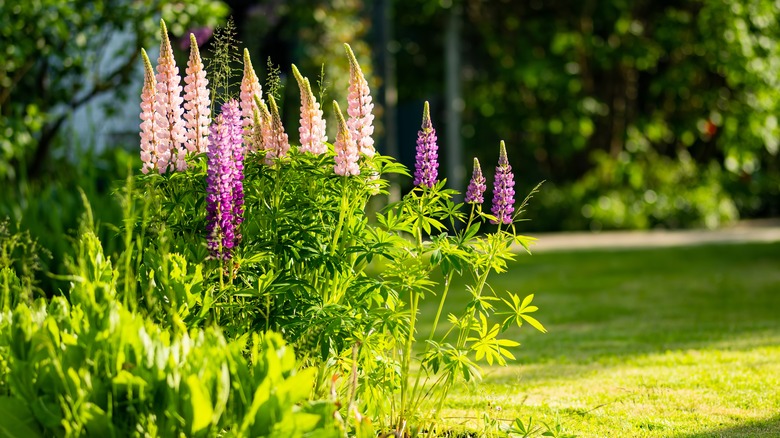This Gorgeous Plant Is A Hummingbird Magnet You'll Want To Grow In Your Yard
Hummingbirds are favorites time and again when it comes to backyard birdwatching. The aerodynamic flying skills and territorial behavior hummers — as their fans often call them — display while feeding can be entertaining to watch. Hanging hummingbird feeders is one way you can attract these feathered friends to your yard, but they also love certain types of flowers and will frequent spaces where they're growing. One is the lupine, a plant with palmlike leaves and tall spiky flowers in various colors. In Texas, where a particular variety is the state flower, they're called bluebonnets.
Lupines are actually legumes in the pea family, so they have an abundance of individual petals on each flower spike, similar to pea flowers. They generally bloom in the late spring from about April through June (depending on the climate since they like cooler temperatures) and look lovely in meadow-style or cottage gardens. You can plant them in the fall and enjoy their flowers the following spring. They like sandy soil that drains well, and remember to place them in areas that get full sun to yield the most blooms and increase your chances of drawing in hummingbirds.
Why hummingbirds are attracted to lupines
Flowers that produce an abundance of nectar are always appealing to hummingbirds, and lupines fall into that category. Like bees, hummingbirds go from flower to flower, but instead of seeking pollen, they feed on their nectar. That sugary substance gives them the fuel their high metabolism needs. After all, hummers speed around at about 27 miles per hour and flap their wings 53 times each second, according to Perdue University Forestry and Natural Resources.
Lupines can also be quite colorful, so they're not only pretty, but they lure hummingbirds to a yard with their bright hues. These birds don't have a good sense of smell, so the bright pinks, purples, and deep blues of lupines catch their eye and draw them in to feed. In addition to consuming nectar for energy, hummingbirds also feed on insects, and having more insect-attracting flowers present in a garden offers an additional food source for hummingbirds.
Other benefits and cautions when growing lupines in your garden
In addition to hummingbirds, these colorful flowers have the benefit of attracting pollinators like bees to a garden. If you're growing fruits and veggies, this can be a side bonus when planting lupines near other plants. They can also be a lovely addition to a butterfly garden since these fluttery flying insects are also drawn to the spiky flower stalks lupines yield.
Similar to other legumes like beans and peas, planting a crop of lupines can also add nutrients to your soil. They're known as nitrogen fixers and enrich the soil as they put down roots. This can particularly benefit vegetables growing in the surrounding area, like broccoli, tomatoes, and even peppers.
However, when growing in meadows, as they sometimes do as wildflowers, take care if you have cattle on your property. Lupines can be toxic to cows when they forage on them. That's not a problem in most yards, of course, so you can freely add the plant to your garden and watch the hummingbird magic happen each spring.


